Two feared dead after man set himself on fire on board moving Japanese bullet train
PUBLISHED : Tuesday, 30 June, 2015, 12:02pm
UPDATED : Tuesday, 30 June, 2015, 7:54pm
Agence France-Presse in Tokyo

A passenger is carried by rescue workers from a Shinkansen bullet train after it made an emergency stop in Odawara, south of Tokyo. Photo: Kyodo
Two people are feared dead and two others are seriously injured after a man apparently set himself on fire aboard a moving shinkansen bullet train in Japan today.
“We have been informed that there was a passenger in a car on the train who covered him or herself with oil and set it on fire,” said a Japan Railways spokesman.
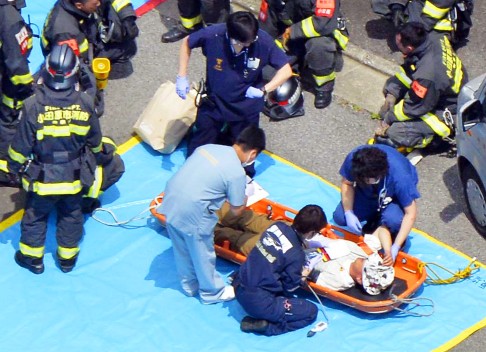
A passenger receives medical treatment from rescue workers at the scene of the incident. Photo: Kyodo
The Yomiuri Shimbun daily said a blast was heard from a toilet cubicle, with the emergency bell pressed soon afterward, which brought the train to a halt.
Media reported the driver of the train found the still-burning body of a man after the emergency stop.
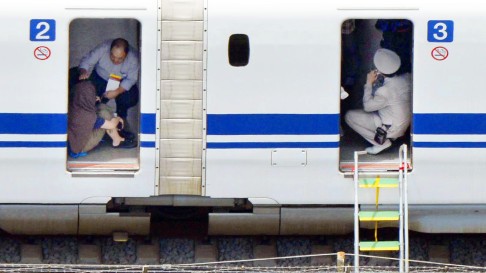
Passengers are seen inside the Shinkansen bullet train after it made an emergency stop in Odawara, south of Tokyo. Photo: Kyodo
The train - a super-fast Nozomi bullet train - was travelling from Tokyo towards Osaka with around a 1,000 passengers, when the fire broke out near Odawara, west of Tokyo.
“We received information indicating that a fire broke out near a toilet and two people were in cardiopulmonary arrest,” a spokesman for Odawara Fire Department said.
“Other passengers were also injured,” he said, without specifying the number.
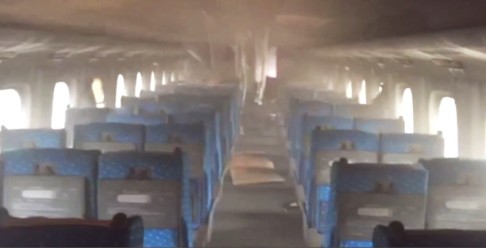
A video capture shows the smoldering interior of a bullet train after a fire caused by a suicide. Photo: AFP
NHK reported the two people feared dead were found on the floor of the first car, but at opposite ends of the carriage. Reuters said one of the dead was a man in his 30s.
The network said the number of injured people was expected to rise as first responders treated more and more people suffering from the effects of smoke inhalation.
The fire erupted at around 11:30am when the train was about 70km from the capital.
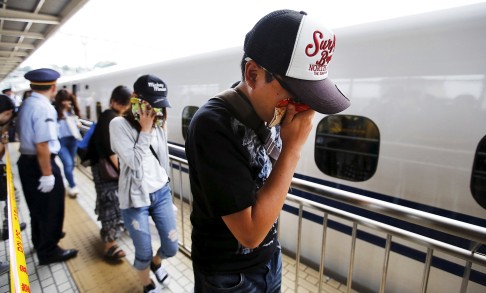
Passengers get off the shinkansen bullet train at Odawara station after it made an emergency stop. Photo: Reuters
Footage on TBS television showed a train carriage filled with smoke and passengers evacuating with handkerchiefs pressed to their faces. One clutched a baby to their chest.
Prime Minister Shinzo Abe set up a task force to respond to the incident, TV networks said.
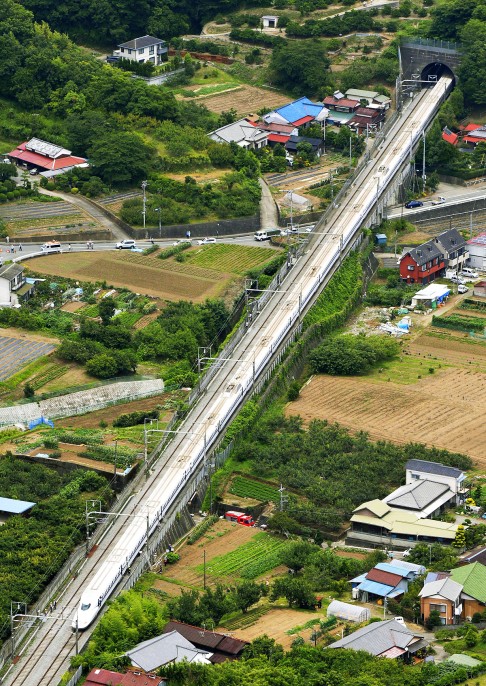
An aerial shot of the super-fast Nozomi bullet train which was travelling from Tokyo towards Osaka with around a 1,000 passengers onboard. Photo: Kyodo
Japan’s superfast Shinkansen trains have until now been known for their speed and their safety. In the 50 years they have been in service no one has been killed in a crash. The trains connect cities along the length and breadth of the country.
Despite the huge volume of passengers it serves, the network operates with an enviable punctuality rate.
The first service connecting Tokyo and the western commercial hub of Osaka, some 500km away, began in 1964, as Japan prepared to host the Olympic Games.
An average of more than 400,000 passengers use the service daily, travelling at speeds of up to 285km/h, with around 300 trains running in both directions each day.
When the system marked its 50th anniversary last year, the Tokyo-Osaka line had carried a total of 5.6 billion passengers, with trains travelling a cumulative 2 billion kilometres, enough to circle the globe 50,000 times.
